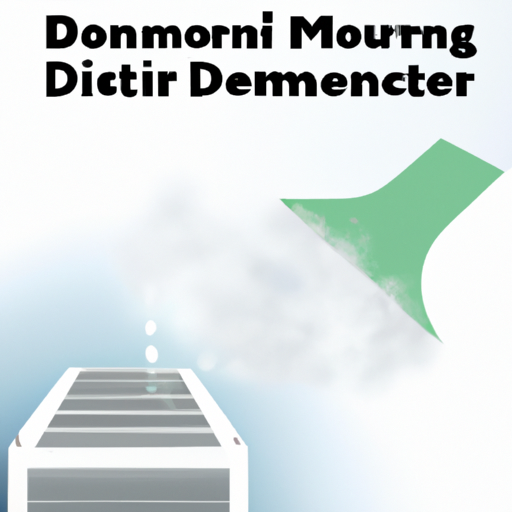
Ever wondered if using a dehumidifier could actually make a room cooler? Well, you’re in the right place to find out. In this article, we’ll explore the relationship between dehumidifiers and room temperature, uncovering whether or not these handy devices have the power to bring a refreshing chill to your living space. So, grab a cup of your favorite cool beverage and let’s dive into the world of dehumidifiers and their impact on room temperature. Prepare to be amazed!
Can a Dehumidifier Make a Room Cooler?
Understanding the Purpose of a Dehumidifier
A dehumidifier is a household appliance designed to reduce the humidity levels in a room. It works by extracting excess moisture from the air, helping to create a more comfortable living environment. While the primary goal of a dehumidifier is to control humidity, many people wonder if it can also have a cooling effect on the room.
Defining the Concept of Coolness
Before delving into the relationship between dehumidifiers and room cooling, it’s important to understand what it means for a room to be cooler. In the context of indoor comfort, coolness refers to a lower perceived temperature. While temperature itself plays a significant role, there are other factors that affect how cool or warm a room feels to occupants, such as humidity, air movement, and personal preferences.
Exploring the Relationship between Humidity and Temperature
Humidity and temperature are closely linked and can influence each other. The relative humidity represents the amount of moisture present in the air compared to the maximum amount it can hold at a given temperature. As humidity increases, the ability of the air to absorb moisture decreases, which can impact the perception of temperature. High humidity levels can make a room feel warmer than it actually is, while lower humidity levels can contribute to a cooler environment.
Effects of Moisture on Perceived Comfort
Moisture in the air can greatly impact perceived comfort. High humidity levels can make a room feel sticky and uncomfortable, with moisture clinging to the skin and making it harder for the body to cool itself through sweating. This can lead to a sensation of increased warmth, even if the actual temperature is relatively moderate. On the other hand, lower humidity levels can enhance comfort by reducing the stickiness and allowing the body’s natural cooling mechanisms to function more efficiently.
The Role of a Dehumidifier in Reducing Humidity
A dehumidifier plays a vital role in reducing humidity levels in a room. By drawing in air and extracting excess moisture, it helps to create a drier environment. As the dehumidifier continues to operate, it decreases the relative humidity, which combats the stickiness and discomfort associated with high moisture levels. A reduction in humidity can enhance the overall perceived comfort and make a room feel cooler.
Potential Cooling Effect of a Dehumidifier
While a dehumidifier primarily functions to reduce humidity, it can have a secondary cooling effect. When a dehumidifier operates, it typically expels warmer air. By removing moisture from the indoor environment, the dehumidifier effectively removes latent heat, which can contribute to lower overall room temperature. However, it’s important to note that the cooling effect of a dehumidifier may be relatively small compared to dedicated air conditioning systems.
Factors Influencing the Cooling Effect
Several factors can influence the cooling effect of a dehumidifier. The initial room temperature plays a role, as a dehumidifier will have less impact on cooling if the room is already at a low temperature. The relative humidity level also affects the cooling effect, as a higher humidity level creates a greater potential for cooling by removing excess moisture. Additionally, room size and air circulation can influence the effectiveness of a dehumidifier, as well as the capacity and efficiency of the dehumidifier itself.
Considerations for the Effective Use of a Dehumidifier
To maximize the cooling effect of a dehumidifier, certain considerations should be taken into account. The optimal relative humidity range for comfort is typically between 30% and 50%. Ensuring correct placement of the dehumidifier is essential, as it should be positioned in a central location within the room to allow for even air circulation. Choosing the right size and features of the dehumidifier is crucial, as it should match the room’s square footage and have appropriate settings for humidity control.
Alternate Methods for Cooling a Room
While a dehumidifier can contribute to a cooler room, it’s essential to explore other methods for cooling as well. Air conditioning systems are specifically designed for providing cooler air and can have a more significant impact on room temperature. Additionally, utilizing fans or implementing natural ventilation can help circulate air and create a cooling breeze effect. These methods can complement the use of a dehumidifier and provide enhanced comfort in hot and humid conditions.
Conclusion
In conclusion, while a dehumidifier’s primary purpose is to reduce humidity levels, it can also have a cooling effect on a room. By extracting excess moisture, a dehumidifier helps to create a drier and more comfortable environment, which can contribute to a cooler perception of temperature. However, it’s important to note that the cooling effect of a dehumidifier may be limited compared to dedicated cooling systems. To create the most comfortable indoor environment, it’s advisable to consider a combination of methods, such as using a dehumidifier alongside air conditioning or natural ventilation.